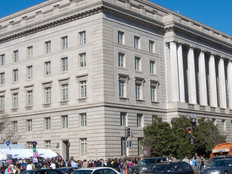Pick for IRS Chief Will Face IT Modernization Hurdles
It has been more than six weeks since the Senate Finance Committee approved the nomination of Charles Rettig, the tax lawyer who is President Donald Trump’s choice to lead the IRS, but the full Senate has not yet confirmed him.
As Politico reports, there is no firm timeline for when Rettig’s nomination will receive a vote on the Senate floor, though he is still likely to be confirmed. If and when he is, Rettig has vowed to make technology modernization one of his main priorities.
In keeping with the Trump administration’s focus on IT modernization, Rettig has vowed to push the IRS out of the mid-20th century when it comes to tech. He will face significant hurdles, given that much of the revenue service’s IT is out of date, according to a Treasury Department inspector general’s report. Meanwhile, in April, the House passed legislation that would codify the role of the IRS CIO and require the implementation of a strategic IT plan.
“The modernization of the IRS IT system and bringing the IRS IT system into the 21st century is one of my top goals,” Rettig said at his June 28 confirmation hearing, FCW reports. “It serves two purposes: It serves not only the protection of taxpayer data … but also modernization serves to enhance services that taxpayers in this country deserve.”
IRS Has an IT Modernization Hill to Climb
The IRS has long been in need of technology modernization, but the issue came to the fore earlier this year when the agency’s Individual Master File, the main application the IRS uses to store and process tax submissions and process IRS transactions, suffered a critical breakdown on the deadline day for tax filing. As a result, the IRS extended the filing deadline.
Dave Powner, the former director of IT management issues for the Government Accountability Office, said last year that the IRS spends about $2.7 billion annually on IT, with about 70 percent of that going toward operational or legacy systems, according to Federal News Radio. IRS CIO Gina Garza told Congress last fall that it will take $425 million and five years to update code running the IMF, the publication notes.
The IRS is desperately in need of tech upgrades, according to a September 2017 Treasury Department inspector general’s report, which found that 64 percent of the IRS’ IT hardware is “beyond its useful life.”
The IRS is moving from the IMF to Customer Account Data Engine 2. According to the federal IT Dashboard, the IRS expects to spend $110.9 million on CADE2 in fiscal year 2018, which ends at the end of this month. The initiative involves 26 individual projects.
Meanwhile, as Federal Times reports, in April the House passed the 21st Century IRS Act, a bill aimed at improving IRS cybersecurity, enhancing taxpayer identity protection and modernizing the agency’s IT.
Notably, the bill would codify the role and responsibility of the IRS CIO. The legislation notes that the IRS CIO will be responsible for developing and implementing a multiyear strategic plan for the IRS’ IT needs.
It would need to include performance measurements of such technology and of the implementation of such a plan, include a plan for an integrated enterprise architecture of the agency’s IT and take into account the resources needed to accomplish such a plan. Additionally, it must consider planned major acquisition of IT, including CADES2 and the IRS’ Enterprise Case Management System.









